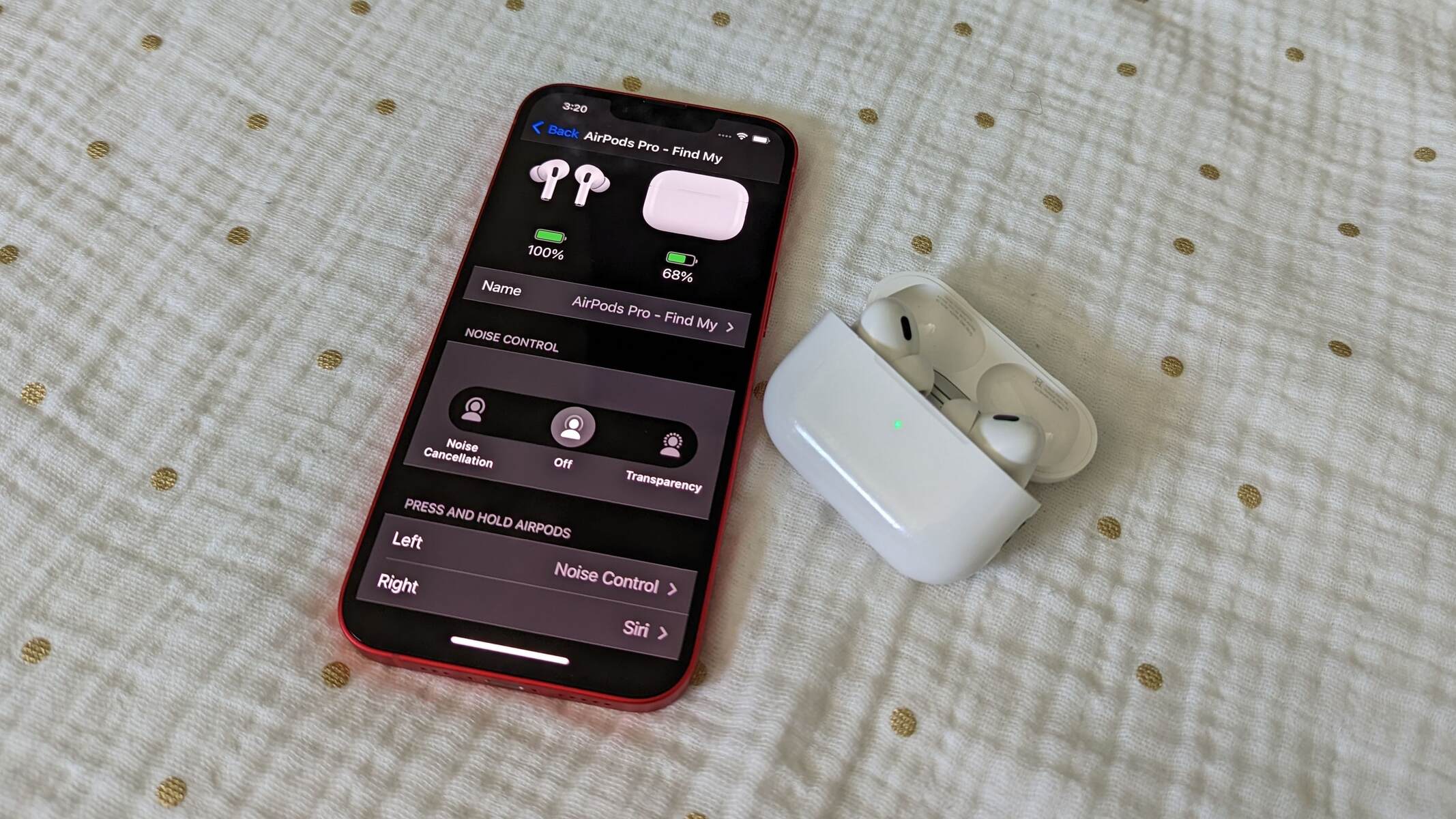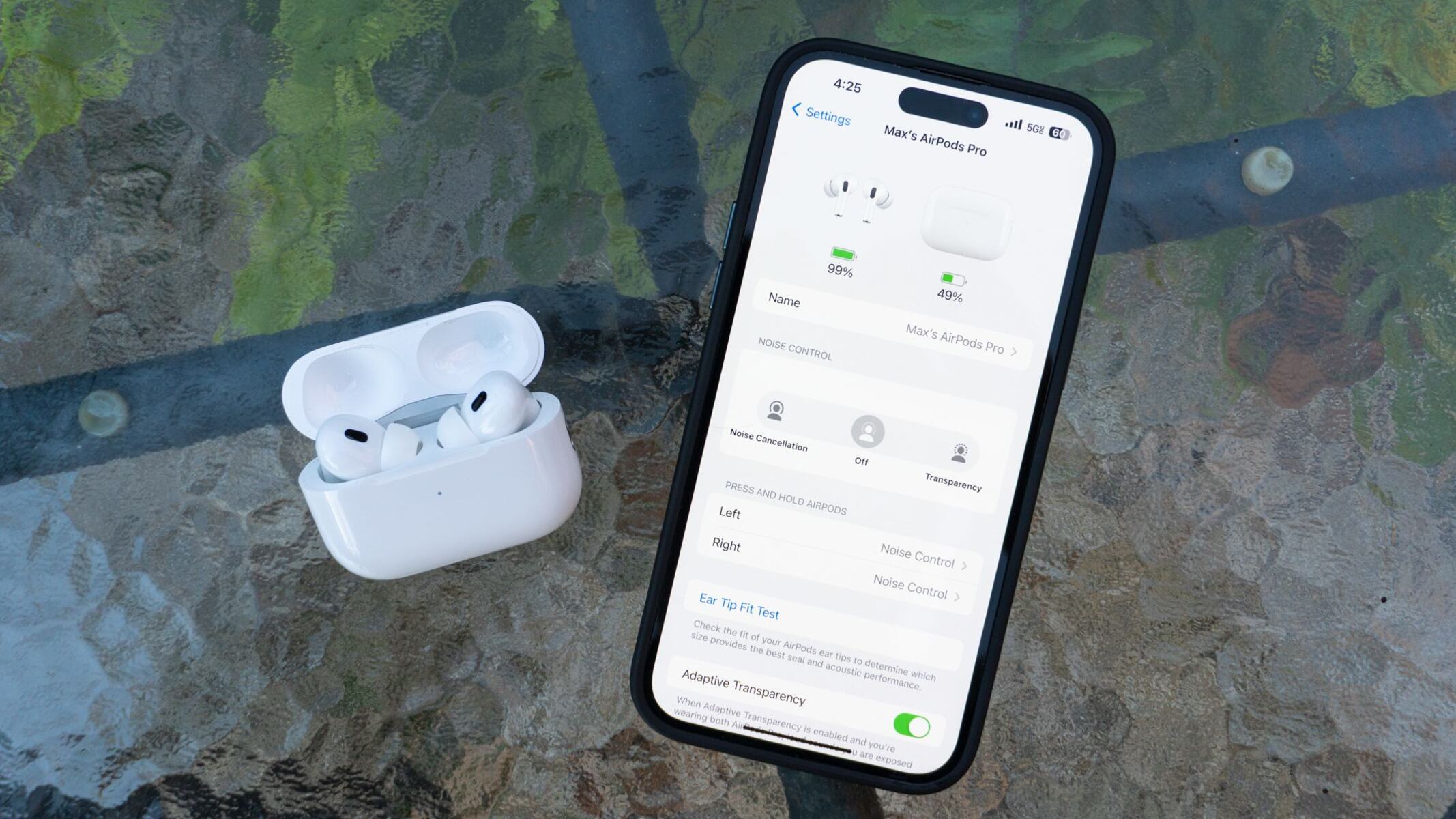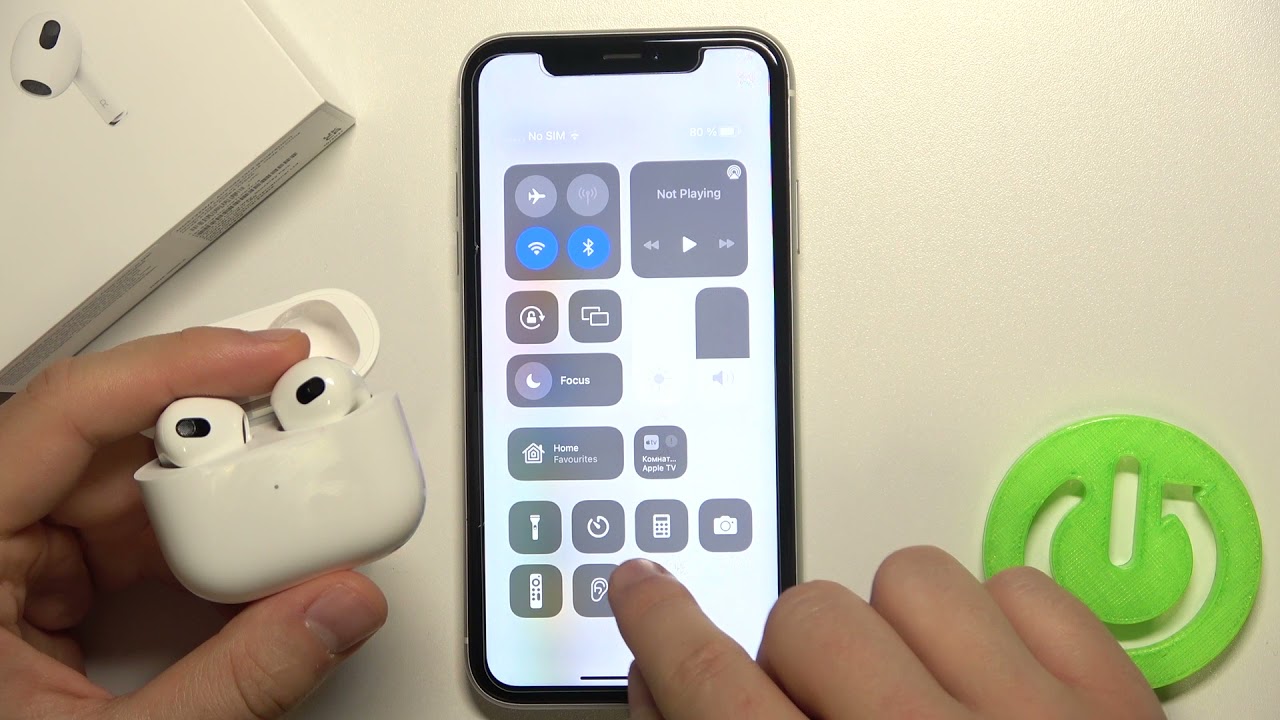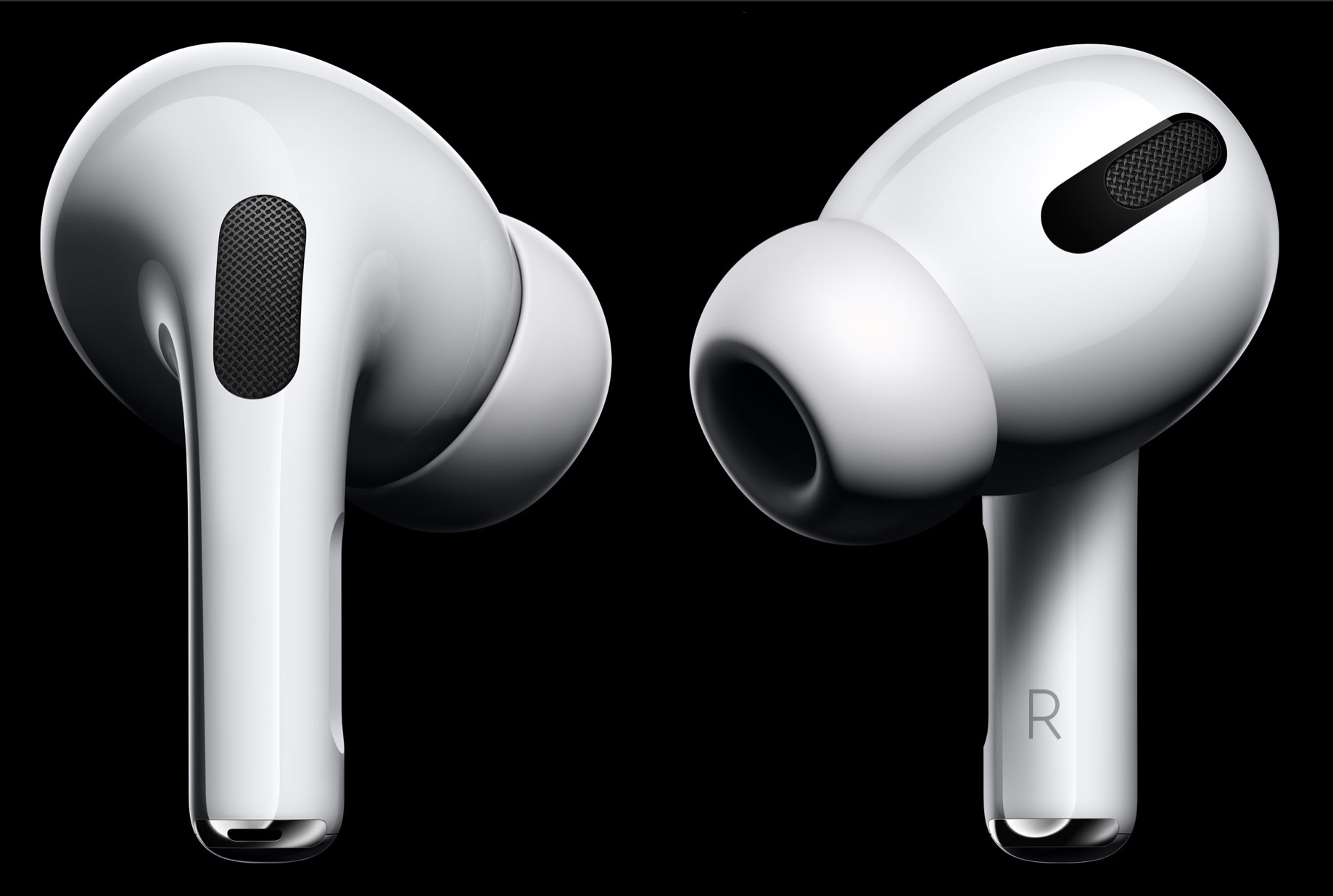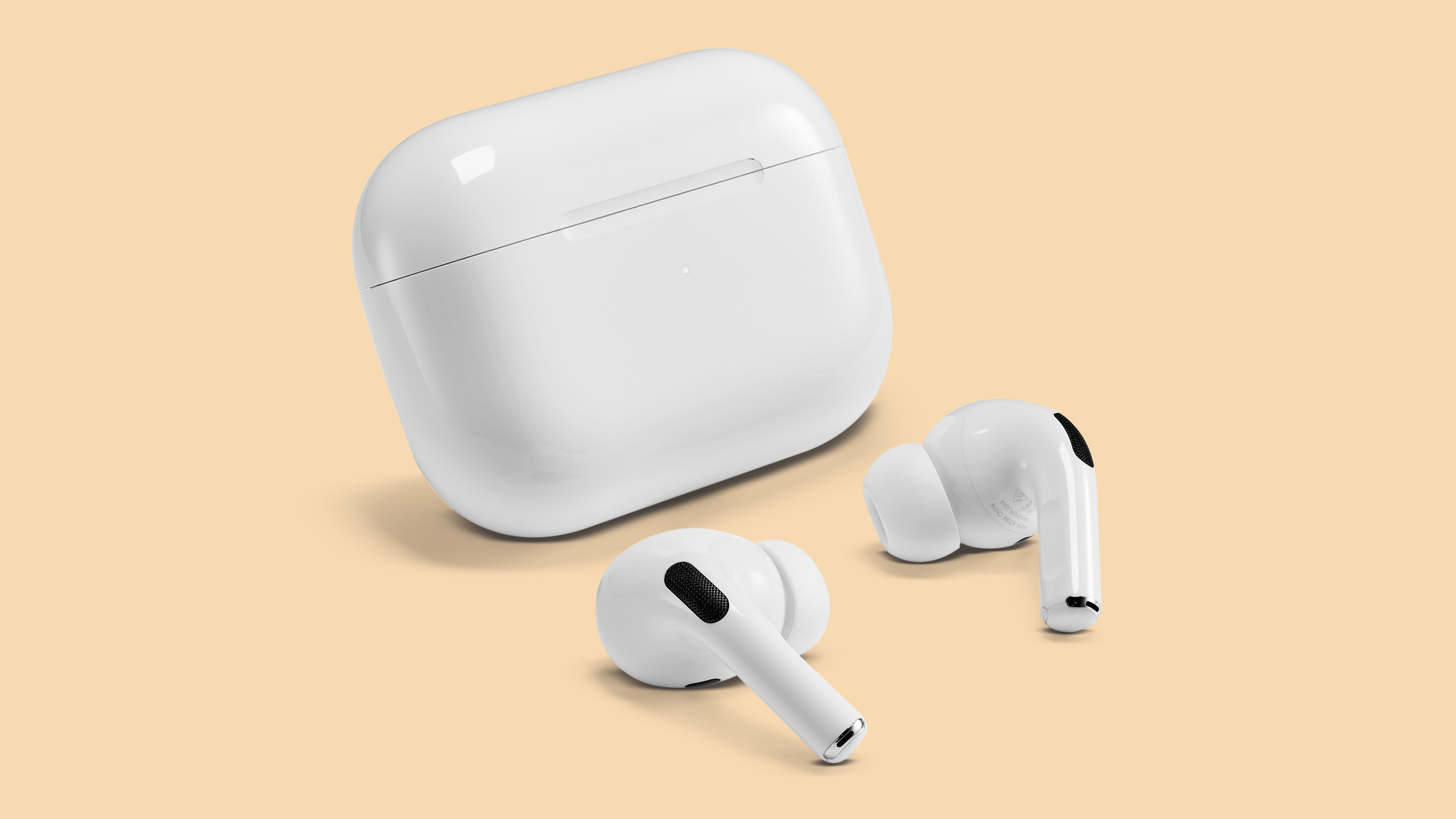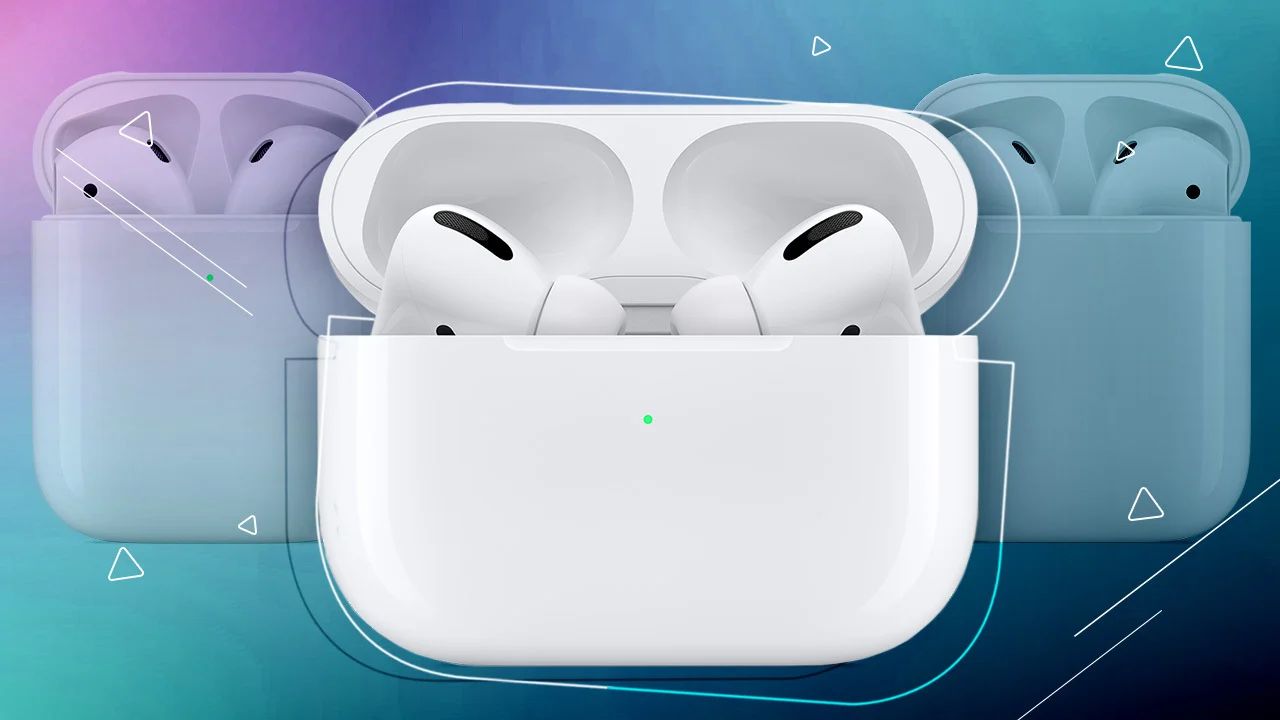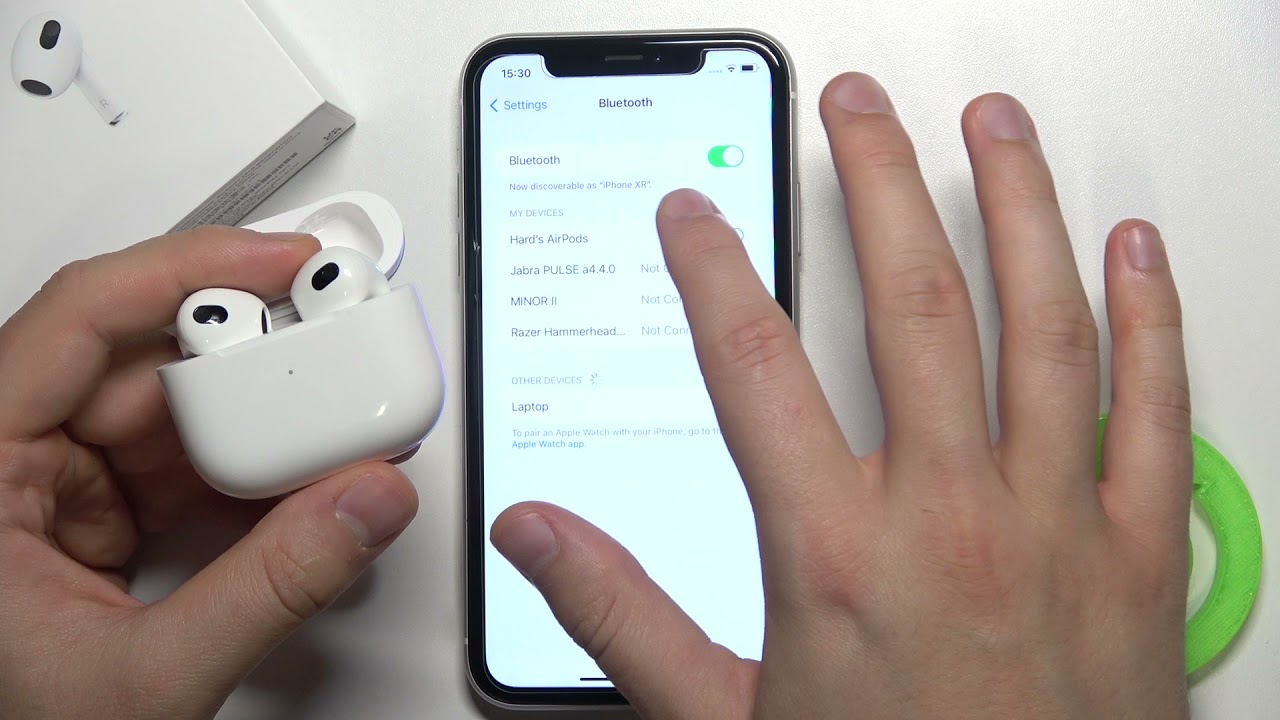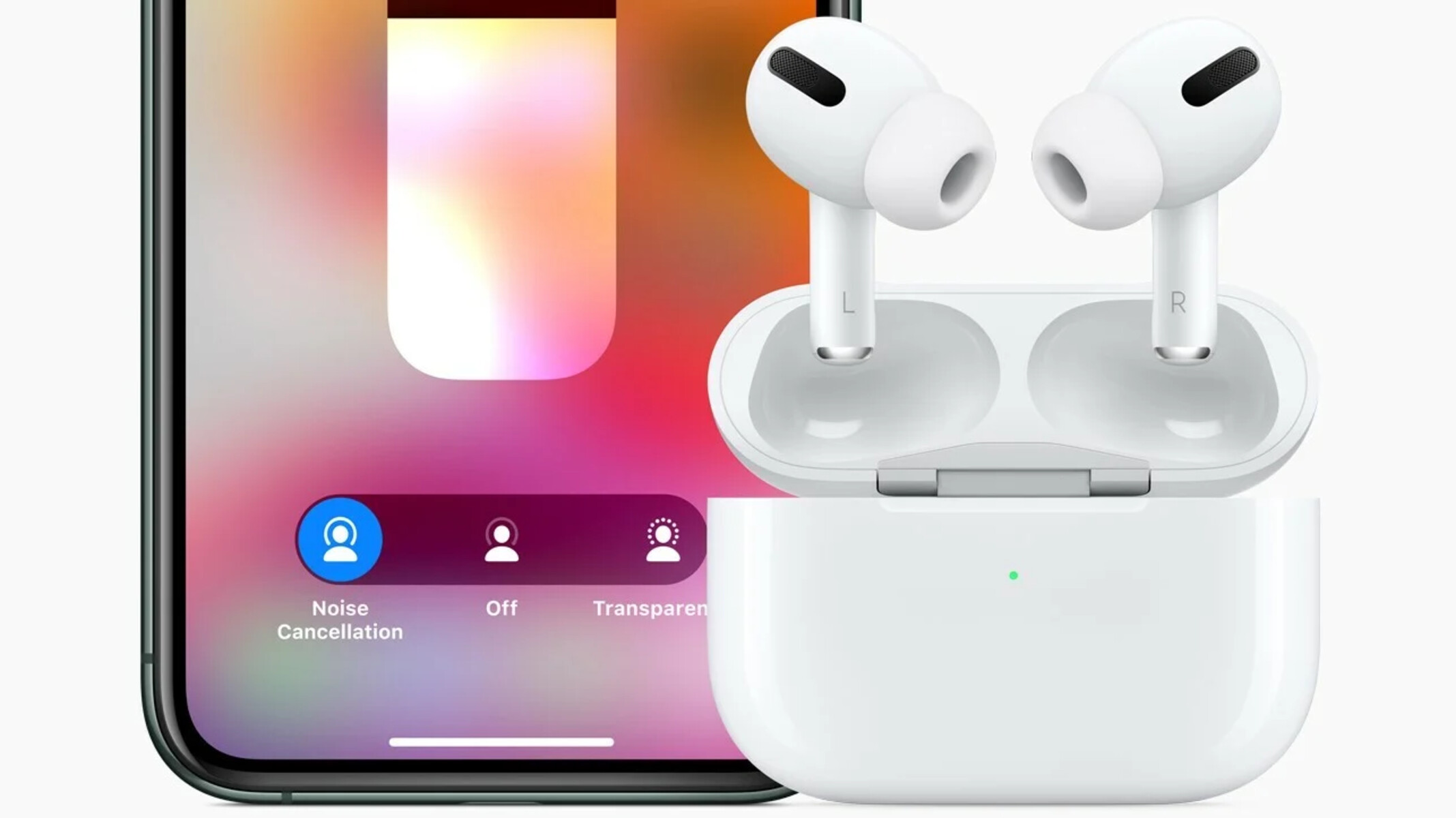Introduction
Welcome to the world of noise-canceling technology! If you’ve recently purchased a pair of AirPods or are considering investing in them, you may be wondering how to determine if the noise-canceling feature is working effectively. AirPods, developed by Apple, have gained immense popularity due to their sleek design, seamless connectivity, and impressive sound quality. But when it comes to evaluating the noise-canceling capabilities, there are a few key indicators that can help you assess its performance.
Noise cancellation is a technology that minimizes external sounds, allowing you to enjoy your favorite tunes without any distractions. It works by using microphones to detect ambient noise and then producing an inverse sound wave, effectively cancelling out the unwanted sounds. This process creates a peaceful and immersive audio experience, whether you’re flying, studying in a bustling café, or simply trying to escape the noise of your surroundings.
When it comes to AirPods, they offer a unique noise-canceling feature that adapts to the shape of your ears using built-in accelerometers and optical sensors. This adaptive design ensures a secure fit and optimal noise reduction, making them a popular choice for people on the go.
In this article, we will explore various methods to determine if noise cancellation is functioning properly on your AirPods. By following these simple tests, you can ensure that you’re getting the most out of your AirPods’ noise-canceling capabilities.
How Noise Cancelling Works in AirPods
Understanding how noise cancellation works in AirPods is essential in assessing its effectiveness. As mentioned earlier, AirPods utilize microphones to detect ambient noise and then generate an inverse sound wave to cancel out those sounds. This technology operates in real-time, continuously adjusting to the shape of your ears to deliver an optimized noise-canceling experience.
The microphones in the AirPods capture the external sounds and send them to the device’s processor for analysis. The processor then generates an equal but opposite sound wave, which is played through the speakers of the AirPods. These opposing sound waves effectively neutralize the ambient noise, allowing you to enjoy your music or audio content without interference.
One of the key advantages of AirPods’ noise cancellation is the adaptive design. With built-in accelerometers and optical sensors, the AirPods can detect when they are inserted in your ears, automatically activating the noise-canceling feature. This personalized approach ensures a secure fit and optimal noise reduction.
Furthermore, AirPods Pro, the latest model from Apple, offers an additional feature known as the Transparency Mode. This mode allows you to listen to your surroundings while still wearing the AirPods, thanks to the external microphones that amplify the ambient sounds. This feature is particularly useful when you need to stay aware of your surroundings or have a conversation without removing your earbuds.
Overall, the noise-canceling technology in AirPods combines advanced algorithms, microphones, and personalized sensors to create a seamless and immersive audio experience. By understanding how this technology works, you can better evaluate the functionality of your AirPods’ noise cancellation feature and make the most out of your device.
Checking the Noise Cancelling Mode
Before diving into the various tests to determine if noise cancellation is working on your AirPods, it’s important to ensure that the mode is turned on. To check the noise cancelling mode on your AirPods, follow these simple steps:
- Connect your AirPods to your device (iPhone, iPad, Mac, etc.) via Bluetooth.
- Open the Control Center on your device. On an iPhone or iPad, swipe down from the top right corner of the screen. On a Mac, click on the Bluetooth icon in the menu bar.
- Look for the AirPods icon in the Control Center or Bluetooth menu. Tap or click on it to open the AirPods settings.
- Within the AirPods settings, you should see the noise cancellation mode option. Make sure it is toggled on.
Once you have confirmed that the noise cancellation mode is activated, you can proceed with the following tests to verify its functionality.
It’s important to note that not all AirPods models have noise cancellation capabilities. The noise cancellation feature is available in AirPods Pro, while the standard AirPods do not have this feature. Therefore, make sure you are using AirPods Pro if you intend to test the noise cancellation feature.
Now that you’ve ensured the noise cancellation mode is turned on, let’s move on to the next steps to evaluate the effectiveness of the noise-cancelling feature on your AirPods.
Listening for Ambient Noise
One way to determine if noise cancellation is working on your AirPods is by listening for the reduction in ambient noise. Put on your AirPods and find a quiet or moderately noisy environment to conduct this test.
Start by playing some music or audio content at a comfortable volume. As the content plays, concentrate on the background noise. Observe whether the noise from your surroundings diminishes or becomes nearly inaudible. The noise-cancelling feature in AirPods is designed to suppress background sounds, creating a more immersive listening experience.
Pay attention to specific elements such as distant conversations, the hum of a refrigerator, or the rumble of traffic. If you notice a significant reduction in these sounds, it indicates that noise cancellation is functioning correctly. However, keep in mind that noise cancellation may not completely eliminate all ambient noise, especially if it consists of sudden or high-frequency sounds.
Additionally, try moving around different environments to test the adaptability of the noise-cancelling feature. Walk along a busy street, visit a crowded café, or step into a noisy public transportation hub. In each setting, observe how well the AirPods reduce unwanted noise and enhance your audio experience.
If you find that the noise cancellation feature does not effectively reduce ambient noise, double-check that the mode is properly enabled, and ensure that you have a tight and secure fit with the AirPods in your ears. Adjusting the fit or experimenting with different ear tip sizes can sometimes improve noise reduction.
By listening for ambient noise and evaluating how effectively it is canceled out by your AirPods, you can gain a better understanding of the noise-cancelling performance and make any necessary adjustments.
Observing Battery Drain
Another indicator of effective noise cancellation on your AirPods is the impact it has on battery drain. Noise cancellation requires a significant amount of power, so it’s important to observe how it affects the overall battery life of your AirPods.
Start by fully charging your AirPods and then using them in noise cancellation mode for a reasonable period. This can be several hours of continuous use or spread out over multiple shorter sessions. Make a note of your AirPods’ battery level before and after using them in noise cancellation mode.
If you notice a substantial decrease in battery percentage during the duration of noise cancellation use, it indicates that the feature is active and consuming power. The more noticeable the reduction in battery life, the more likely it is that the noise cancellation is effectively working, as this confirms the active engagement of the technology.
However, it’s important to note that the battery drain from noise cancellation will vary depending on factors such as volume level, audio content, and the duration of use. Additionally, keep in mind that other factors, such as connectivity and app usage, can also contribute to battery drain on your AirPods.
If you find that there is minimal battery drain or no notable difference between using noise cancellation mode and regular listening, ensure that noise cancellation is properly enabled. It may also be helpful to update your AirPods’ firmware to the latest version, as newer updates often include enhancements to noise cancellation efficiency and power management.
By observing the battery drain during noise cancellation usage, you can get a sense of whether the feature is actively functioning and contributing to a more immersive audio experience on your AirPods.
Verifying Noise Reduction in Loud Environments
A reliable way to verify the effectiveness of noise cancellation on your AirPods is by testing them in loud environments. Find a location with significant background noise, such as a busy street, a crowded shopping mall, or a bustling café.
Place your AirPods securely in your ears and play some music or audio content at a moderate volume. As the audio plays, pay attention to the clarity and prominence of the sound. Notice if the background noise is significantly reduced, allowing the audio from your AirPods to stand out more prominently.
Try focusing on specific sounds or conversations happening around you. If you find that these external sounds are noticeably less prominent and do not interfere with your listening experience, it indicates that the noise cancellation feature is effectively reducing the ambient noise.
An ideal test scenario is to compare the performance of your AirPods with noise cancellation enabled versus using regular earphones or headphones. Switch between the two and observe the difference in sound quality and your ability to enjoy your audio content without external distractions.
Keep in mind that while noise cancellation is capable of reducing a significant amount of background noise, it may not completely eliminate all sounds, especially sudden or high-frequency noises. It is designed to create a more peaceful and immersive environment for your audio experience, allowing you to focus on your music or content while minimizing distractions from your surroundings.
If you find that the noise reduction in loud environments is minimal or not satisfactory, check that the noise cancellation mode is activated and that your AirPods have a secure fit in your ears. Adjusting the fit or experimenting with different ear tip sizes might enhance the noise cancellation performance.
By verifying the noise reduction capabilities of your AirPods in loud environments, you can assess the effectiveness of the noise cancellation feature and enjoy a more immersive and uninterrupted listening experience.
Testing with Different Music Genres
To further evaluate the noise cancellation capabilities of your AirPods, it’s beneficial to test them with various music genres. Different genres often consist of distinct instrumental arrangements, vocal styles, and audio production techniques, which can help you assess how effectively noise cancellation works across different types of content.
Start by selecting a music genre that you typically enjoy or frequently listen to. It could be anything from classical, rock, pop, hip-hop, or jazz. Play a familiar song from that genre and pay attention to the details and nuances of the music.
As the music plays, focus on the clarity and separation of different instruments and vocals. Notice if the noise cancellation feature enhances the overall listening experience by reducing background noise and allowing the music to shine through with more clarity and definition.
Switch between noise cancellation mode and regular listening mode to compare the difference in audio quality. When noise cancellation is enabled, you should notice that the music becomes more immersive, with less interference from external sounds.
It can also be beneficial to test your AirPods with genres that incorporate a wide dynamic range or detailed sound imaging, such as orchestral music or electronic music. These genres often include softer, intricate melodies and complex instrumentations, making it easier to discern the impact of noise cancellation on the overall listening experience.
Repeat this test with a few different music genres to see how noise cancellation performs across various types of audio content. Note any differences in sound quality, level of immersion, and the ability to enjoy the music without distractions.
If you find that noise cancellation is less effective with certain music genres, ensure that the mode is properly enabled and that your AirPods have a secure fit. Experimenting with different ear tip sizes can sometimes improve noise reduction and overall audio quality.
By testing your AirPods with different music genres, you can gauge the performance of noise cancellation across a range of audio styles and determine its effectiveness in enhancing your overall music listening experience.
Trying Out the Transparency Mode
In addition to the noise cancellation mode, AirPods Pro offers a unique feature known as Transparency Mode. This mode allows you to stay connected to your surroundings while wearing your AirPods.
To try out the Transparency Mode on your AirPods Pro, follow these steps:
- Ensure that your AirPods Pro are connected to your device via Bluetooth.
- Open the Control Center on your device. On an iPhone or iPad, swipe down from the top right corner of the screen. On a Mac, click on the Bluetooth icon in the menu bar.
- Look for the AirPods icon in the Control Center or Bluetooth menu. Tap or click on it to open the AirPods settings.
- Within the AirPods settings, activate the Transparency Mode option.
Once you have enabled Transparency Mode, put on your AirPods Pro and play some music or audio content. The Transparency Mode uses the external microphones on the AirPods to pick up and amplify the sounds around you, allowing you to hear and interact with your environment without removing your earbuds.
This mode is particularly useful in scenarios where you need to stay aware of your surroundings, such as walking on a busy street or having a conversation with someone. It allows you to enjoy your music while remaining attentive to potential hazards or important interactions.
While trying out the Transparency Mode, pay attention to the level of sound amplification and how well it allows you to hear external noises. You should be able to perceive sounds and conversations around you more clearly while still maintaining a satisfactory level of audio enjoyment.
If you find that the Transparency Mode is not functioning as expected, double-check that it is properly enabled in your AirPods settings. Also, ensure that your AirPods Pro have a secure fit in your ears, as an improper fit may affect the microphone performance and the level of sound amplification.
By experimenting with the Transparency Mode, you can experience a unique feature of your AirPods Pro that provides a balance between staying connected to your surroundings and enjoying your audio content.
Comparing with Other Noise Cancelling Earphones
When evaluating the noise cancellation capabilities of your AirPods, it can be helpful to compare them with other noise-canceling earphones on the market. This comparison allows you to gauge the effectiveness of your AirPods and gain a broader perspective on the performance of noise cancellation technology.
Consider borrowing or trying out a friend’s noise-canceling earphones or researching different models to find other popular options. Here are a few factors to consider when comparing noise-canceling earphones:
1. Noise Reduction Quality: Pay attention to how well the noise-canceling earphones reduce background noise. Compare the level of noise reduction with that of your AirPods to determine if they perform similarly or if one outperforms the other.
2. Audio Quality: Assess the overall audio quality when using noise cancellation mode on different earphone models. Note any differences in sound clarity, bass response, and overall balance. This can help you determine if your AirPods deliver a satisfactory audio experience in conjunction with noise cancellation.
3. Comfort and Fit: Evaluate the comfort and fit of the noise-canceling earphones. Consider factors such as the weight, ear tip options, and ergonomics. A good fit ensures optimal noise cancellation and comfortable long-term wear.
4. Battery Life: Compare the battery life of your AirPods with other noise-canceling earphones. Longer battery life allows for more extended usage without the need for frequent recharging.
5. Connectivity and Features: Assess the connectivity options and additional features offered by different noise-canceling earphones. Consider factors such as seamless pairing, compatibility with voice assistants, and any additional options that enhance the user experience.
By comparing your AirPods with other noise-canceling earphones, you can evaluate their performance within the context of the broader market. It can help you determine if your AirPods meet your expectations or if there are alternative options that provide superior noise cancellation and audio quality.
Remember that personal preferences, budgets, and individual needs may vary, so take the time to explore different options and find the noise-canceling earphones that best suit your requirements.
Conclusion
Assessing the functionality and effectiveness of noise cancellation on your AirPods is crucial to ensure an optimal audio experience. By following the tests and guidelines outlined in this article, you can determine if noise cancellation is working as intended and make any necessary adjustments to enhance your listening experience.
Remember to check that the noise cancellation mode is properly enabled on your AirPods. This can be done through the Control Center or Bluetooth settings on your device.
Listen for the reduction in ambient noise while using your AirPods. Pay attention to how well external sounds are minimized, allowing you to focus on your audio content without distractions.
Observe the impact of noise cancellation on the battery life of your AirPods. Note if there is a significant decrease in battery percentage during noise cancellation usage, indicating active engagement of the feature.
Test your AirPods in loud environments to assess how well they reduce background noise. Compare the performance to that of regular earphones or headphones to notice any improvements in sound quality and reduction of external distractions.
Try out the Transparency Mode on your AirPods Pro and evaluate its ability to keep you connected to your surroundings while enjoying your audio content simultaneously.
Furthermore, consider comparing your AirPods with other noise-canceling earphones on the market. This comparison can give you a broader perspective on noise cancellation technology and help you determine if your AirPods meet your expectations or if there are alternative options worth exploring.
By taking these steps, you can actively assess the noise cancellation capabilities of your AirPods and make the most out of this advanced technology, ensuring an immersive, uninterrupted, and enjoyable audio experience.







